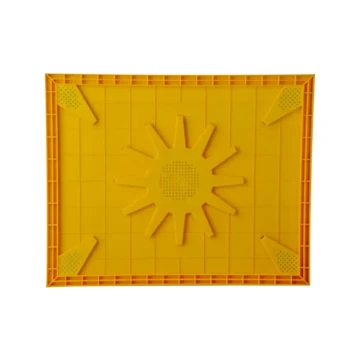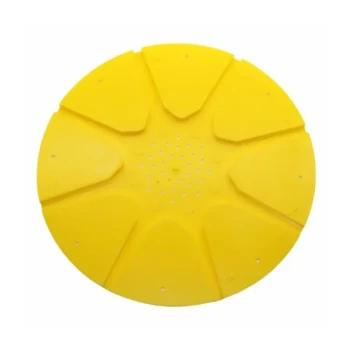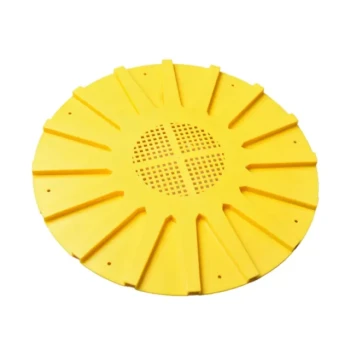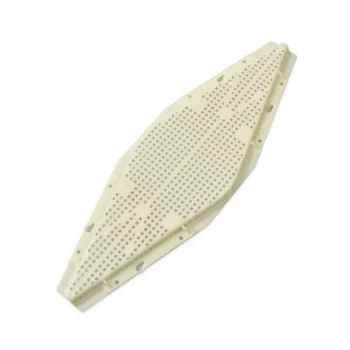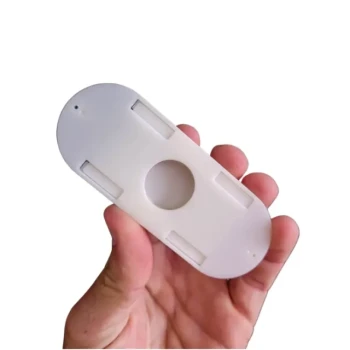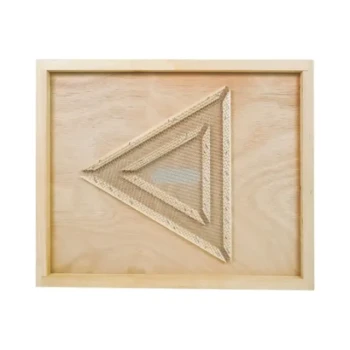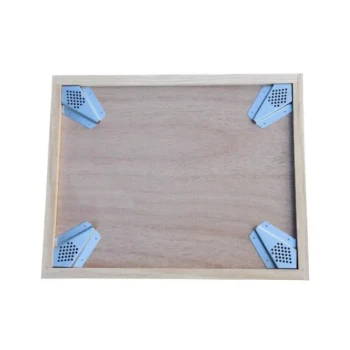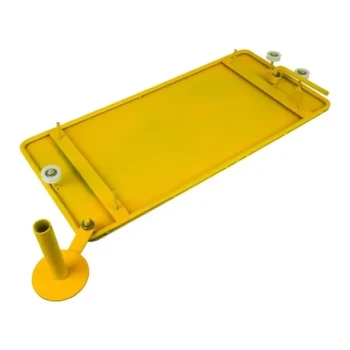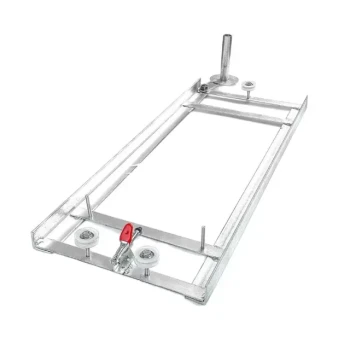For optimal results, a bee escape board should be placed under the honey supers you intend to harvest approximately 24 to 48 hours before you collect the honey. This simple device uses the bees' natural behavior to gently and quietly clear them from the honey boxes, resulting in a significantly calmer and less disruptive harvest for both the beekeeper and the colony.
A bee escape board is not just a piece of equipment; it is a method that leverages the bees' own instincts against them. By creating a one-way exit, it funnels bees down into the brood chamber and prevents their return, making your harvest day remarkably simple and stress-free.
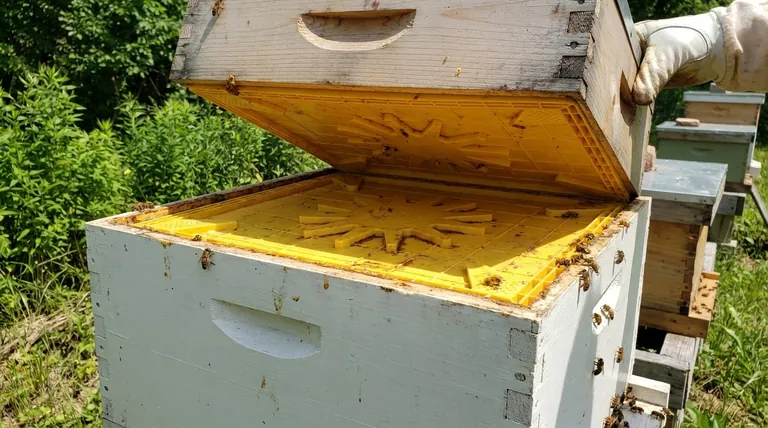
The Principle: How a Bee Escape Works
A bee escape is fundamentally a one-way valve for bees. It's a flat board, the same dimensions as your hive bodies, with one or more small passages installed in the center.
A One-Way Door
The design of the passages, whether a triangular maze or a multi-exit "porter" style, makes it easy for bees to navigate down and out of the honey supers. However, the exit holes on the bottom are difficult for them to find from below, effectively trapping them out of the honey supers.
Leveraging Natural Colony Behavior
This tool works best by taking advantage of the bees' nightly routine. As temperatures cool in the evening, worker bees naturally migrate down from the honey supers into the brood chamber to cluster around the queen and brood for warmth. The escape board simply prevents their return trip the next morning.
The Step-by-Step Process for a Calm Harvest
Proper timing and installation are critical for the bee escape to function correctly. A small mistake can render it ineffective.
Step 1: Check Your Board
Before you go to the hive, ensure your escape board is ready. Check that the escape passages are clear of debris, dead bees, or propolis. Drones, being larger, can sometimes get stuck and block the exits.
The board should be installed with the escape mechanism facing down toward the brood box, allowing bees to leave the supers above it.
Step 2: Choose the Right Time
Place the board on the hive 24 to 48 hours before your planned harvest time.
Using it for less than 24 hours may not give enough bees time to migrate down. Leaving it on for more than 72 hours gives clever bees a chance to find their way back in, defeating the purpose.
Step 3: Install the Board on the Hive
Briefly smoke the hive and break the propolis seal between the honey supers you plan to harvest and the brood boxes below them.
Remove the honey supers as a single unit, set them aside, and place the bee escape board directly on top of the brood chamber. Then, place the honey supers back on top of the escape board.
Step 4: Seal All Other Exits
Crucially, you must ensure there are no other upper entrances for the bees to use. If there are holes in your supers or you use a notched inner cover, the bees will simply use that as a new entrance, and the supers will not be cleared.
Understanding the Trade-offs and Pitfalls
While highly effective, a bee escape board is not foolproof. Understanding common issues will help you troubleshoot any problems.
Problem: Bees Aren't Leaving the Supers
If the supers are not emptying, it is almost always due to one of three reasons. First, you may have accidentally left another upper entrance open. Second, there might be brood in the honey super. Bees will not abandon their young, and an escape board will not work if brood is present.
Finally, very cool weather can cause the bees to cluster for warmth in the supers, making them reluctant to move down through the escape.
Problem: Drones Are Getting Stuck
Larger drones can become stuck in some escape designs, blocking the passage for other bees. Modern designs like the 8-way escape are less prone to this issue. If you find this happening, you may need to clear the board periodically or switch to a different style.
Problem: The Board Is a Time-Based Tool
Unlike brushing bees or using a fume board, which can be done on harvest day, using an escape board requires an extra trip to the apiary. It forces you to plan your harvest at least a day in advance and is not suitable for a last-minute decision to pull honey.
Making the Right Choice for Your Harvest
The bee escape is an excellent tool, but it's one of several methods for clearing bees. Your goals should dictate your choice.
- If your primary focus is a calm hive and minimal stress: The bee escape board is the superior method, provided you can plan your harvest 24-48 hours in advance.
- If your primary focus is speed or a last-minute harvest: Using a fume board or simply brushing bees off each frame is much faster but causes significant disruption and potential defensiveness in the colony.
- If you are a new beekeeper: The bee escape board is the most forgiving and gentle method, teaching you to work with the bees' natural rhythms.
By understanding the simple principles of bee behavior, the escape board becomes a powerful tool for achieving a consistently peaceful and efficient harvest.
Summary Table:
| Key Factor | Optimal Practice |
|---|---|
| Timing | Install board 24-48 hours before harvest. |
| Installation | Place with escape mechanism facing down toward brood box. |
| Prerequisite | Ensure honey supers contain no brood. |
| Critical Check | Seal all other upper entrances to the supers. |
Ready for a peaceful honey harvest? HONESTBEE supplies commercial apiaries and beekeeping equipment distributors with high-quality, reliable bee escape boards and other essential beekeeping supplies. Our wholesale-focused operations ensure you get the equipment you need for a calm, efficient season. Contact our team today to discuss your needs and discover how we can support your beekeeping success.
Visual Guide
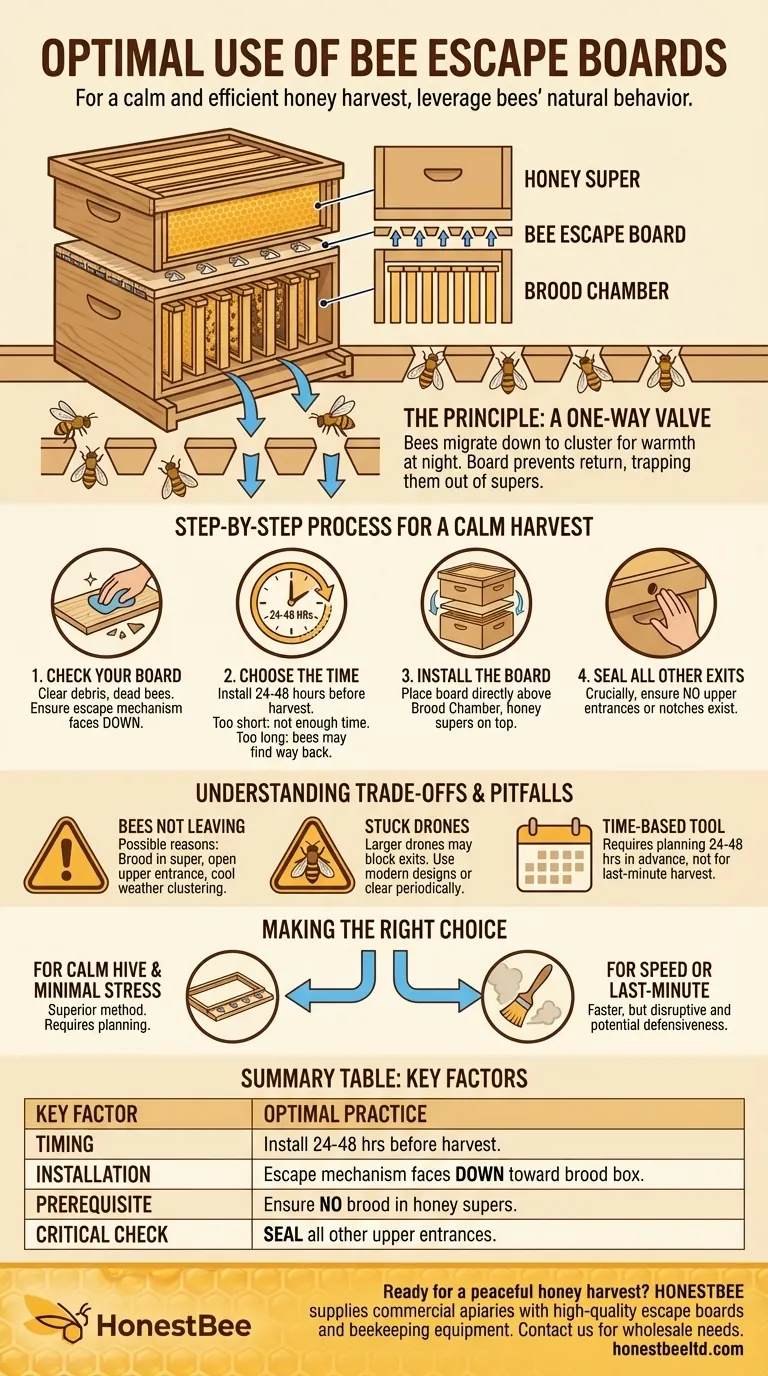
Related Products
- HONESTBEE Multi Exit Plastic Bee Escape Board for Efficient Honey Harvesting
- Efficient Hive Clearing: HONESTBEE 8-Way Plastic Bee Escape
- Durable 16 Way Circular Bee Escape for Efficient Honey Harvesting
- High-Efficiency Diamond Maze Bee Escape for Clearing Supers
- Professional Durable Two-Piece Plastic Bee Escape
People Also Ask
- How long should the Bee Escape Board be left on the honey supers? Achieve a Peaceful Harvest in 24 Hours
- What is the result of using a bee escape board for 24 hours? Achieve a Near Bee-Free Honey Super
- What happens to the bees when a bee escape board is used? A Gentle, Chemical-Free Harvest Method
- How is the Triangle Bee Escape Board placed when removing a super? Master the Correct Placement for a Stress-Free Harvest
- Where should the Bee Escape board be placed? For a Calm, Bee-Free Honey Harvest
